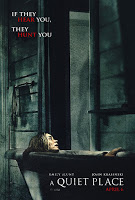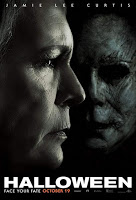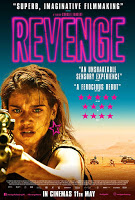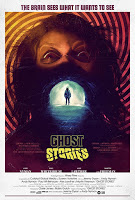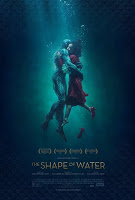It’s always a sign of a great horror year when the mission to come up with a truly satisfying top ten “best” list proves harder than a necrophiliac at a Cher concert. Such was the case with 2018, which unleashed a diverse range of distinctive, thoughtful genre films from all around the world, providing a particularly vital distraction from the unending news coverage reminding us of our own imminent extinction.
Repeat viewings in future years will almost certainly dislodge, demote and promote certain films in the final ten, but, by any standard, these were ten movies that delivered the goods in their selected niche. This list comprises a crowd-pleasing post-apocalyptic monster movie; three genuinely scary and stylistically opposed British movies; a pair of visually extraordinary modern-day revenge flicks; a critically beloved foray into Devil movie territory; an impressively ruthless and scary revival of a 40-year-old horror franchise; and two American films employing familiar horror film monsters to tell genre-bending stories about loneliness, ageing, prejudice and regret.
In a year this good, there were a substantial number of films that didn’t make the final ten though, again a rethink in future months could conceivably lift certain titles into the elite list. Honourable mentions therefore must be given to: two beautiful-looking and great-sounding giallo homages (CRYSTAL EYES, BLOODY BALLET); a trio that rejuvenated the zombie apocalypse sub-genre (THE NIGHT EATS THE WORLD, CARGO, ANNA AND THE APOCALYPSE); the badly marketed but marvellously unsettling THE SECRET OF MARROWBONE; two tonally contrasting Trump-era movies in which American cities rapidly fall due to inexplicable outbreaks of mayhem (MOM AND DAD, BIRDBOX); Alex Garland’s beautifully realised sci-fi horror ANNIHILATION; two deliciously tasteless franchise revivals (THE PREDATOR, PUPPET MASTER: THE LITTLEST REICH); the often frightening paranormal duo of TERRIFIED and SATAN’S SLAVES; and the equal parts whimsical and sinister SUMMER OF 84. It’s worth highlighting here that Andy Mitton’s superb character-driven ghost story THE WITCH IN THE WINDOW contained the single best scare of 2018 movies. As for the final 10…
10: A QUIET PLACE (John Krasinski, USA)
A concise, intense vision of a vastly changed world in which blind monsters rule the landscape and resilient survivors John Krasinski and Emily Blunt stay alive after a jolting personal loss in the opening minutes. With a great role for deaf actress Millicent Simmonds and a unique script where dialogue is mostly conveyed via subtitled sign language, this bleak, unpredictable monster movie delivered the creature feature goods in spades, emotionally engaged a massive worldwide audience and incorporated several sweat-inducing suspense sequences.
9: POSSUM (Matthew Holness, UK)
A suffocating, dread-infused study of mental illness from the creator of GARTH MARENGHI’S DARK PLACE, with a peerless performance from Sean Harris as a middle-aged outcast destined to never escape the mental scars of an abusive childhood and forever haunted by the self-created puppet of the title, resembling a terrifying unused prop from John Carpenter’s THE THING. Terribly sad and uncomfortable to watch, this just might be the most harrowing thing to ever emerge from the Norfolk fens.
8: AWAIT FURTHER INSTRUCTIONS (Johnny Kervorkian, UK)
Against the authentic backdrop of fearmongering 21st century rolling news, a typical, miserable British Christmas falls apart due to inherent racism, enduring grudges and impenetrable metal shutters suddenly imprisoning everyone inside the house. A witty, one-location Brexit-era microcosm of societal collapse, this blackly comic suburban nightmare took as much relish in destroying its horribly believable, deservedly doomed family unit as Adam Marcus’ similarly small scale (and brilliant) SECRET SANTA.
7: HALLOWEEN (David Gordon Green, USA)
A direct sequel to the 1978 HALLOWEEN that wisely ditched the loose-ends dangling from 40 years of variable sequels. This portrait of Jamie Lee Curtis’ Laurie Strode as an agoraphobic but defiant grandmother on a single-minded kill mission was a triumphant combination of respectful homage and a suspenseful, well-crafted modern slasher movie with characters that were worth rooting for and an antagonist still capable of being truly frightening.
6: THE MAN WHO KILLED HITLER AND THEN THE BIGFOOT (Robert D Krzykowski, USA)
In a gift of a starring role, Sam Elliott spends his dotage drinking, regretting the love that got away and reminiscing about the two extraordinary events of the title. An unfashionably tender and beautifully crafted story of ageing, memory and remorse, in which the hero’s assassination of two prominent 20th century monsters pales in significance to the truly important things in his melancholic later life.
5: MANDY (Panos Cosmatos, UK / Belgium / USA)
In the Shadow Mountains of Reagan-era America, lumberjack Nicolas Cage and his wife fall into the clutches of a cult named “The Children of the New Dawn” and a remarkably portentous first hour gives way to a magnificently insane take on 80’s revenge movies drenched in primary colours, cocaine, gaudy violence and the longest cinematic chainsaw in three decades. Cage’s initial descent into helpless grief and the many moments of visual beauty are as memorable as the climactic embrace of exploitation cinema – and it’s enveloped by the mesmerising soundtrack courtesy of Johan Johannsson, who was dead at 48 before the film was released.
4: REVENGE (Coralie Fargeat, France)
A visually stunning rape-revenge movie for the #MeToo era, wittily playing on long-held perceptions of the horror genre’s allegiance to the “male gaze” and forcing the audience to question its own complicity in the objectification and suffering of its ultimately triumphant heroine (Matilda Lutz). She turns the tables during a splatter-filled denouement unfolding against the backdrop of a vacuous TV shopping channel in a condo acting as a shrine to 21st century consumerism, while the misogynist antagonist laments “Women always have to put up a fucking fight…” Unflinching, cringe-inducing gore in the tradition of new wave French horror and a lot to talk about afterwards.
3: HEREDITARY (Ari Aster, USA)
Although it ultimately unleashes an unambiguous climax of headless corpses, grinning nude cultists and a marvellously sour “Hail Satan” punchline, Ari Aster’s feature debut will endure as a masterclass in sustained dread. Constructed around a horribly raw drama of a family fracturing in the face of immense grief, it showcases a couple of astounding performances (Toni Collette, Alex Wolff) and confidently shuns the epileptic pacing and jump-scare clichés of modern mainstream American horror by patiently capturing a sense of suffocating evil. A bone-chilling 21st century recreation of how we felt watching the best of 60’s and 70’s occult cinema.
2: GHOST STORIES (Jeremy Dyson / Andy Nyman, UK)
Adapting their popular West End show for the cinema, lifelong friends and card-carrying horror geeks Jeremy Dyson and Andy Nyman crafted one of the genre’s greatest anthology movies. Hinging on the age-old ghost story trope of the unreliable narrator and its sceptic hero’s mantra of “the eyes see what the brain tells them to see”, it delivered three genuinely frightening stories individual ghost stories, each shot through with very British humour. The climactic twist, however, abandoned conventional scares and spookiness for a tragic foray into a shattered mind courtesy of a disarmingly drab, authentic scene of past cruelty – a “haunting” that could befall any one of us.
1: THE SHAPE OF WATER (Guillermo Del Toro, USA)
Like Del Toro’s modern fantasy masterpiece PAN’S LABYRINTH, this love letter to old Hollywood, monsters and 1960’s American culture offered a seamless hybrid of fairy-tale, horror, humour and harsh reality. Subjectively framed by the narration of melancholic, ageing gay artist Richard Jenkins, it tells the tale of a mute woman (Sally Hawkins) finding inter-species love with a Gill Man-inspired creature created by the American government and played with remarkable grace and subtlety by Del Toro’s long-term muse Doug Jones. By turns unashamedly romantic and startlingly brutal – with a terrifying performance from Michael Shannon as the misogynist FBI agent on a film-long mission to capture the creature –this makes explicit everything CREATURE FROM THE BLACK LAGOON could only suggest. It is perhaps the ultimate cinematic gift for anyone for whom movie monsters signify pleasurable fear, identification with a fellow outsider and even sexual curiosity.
Article written by Steven West

